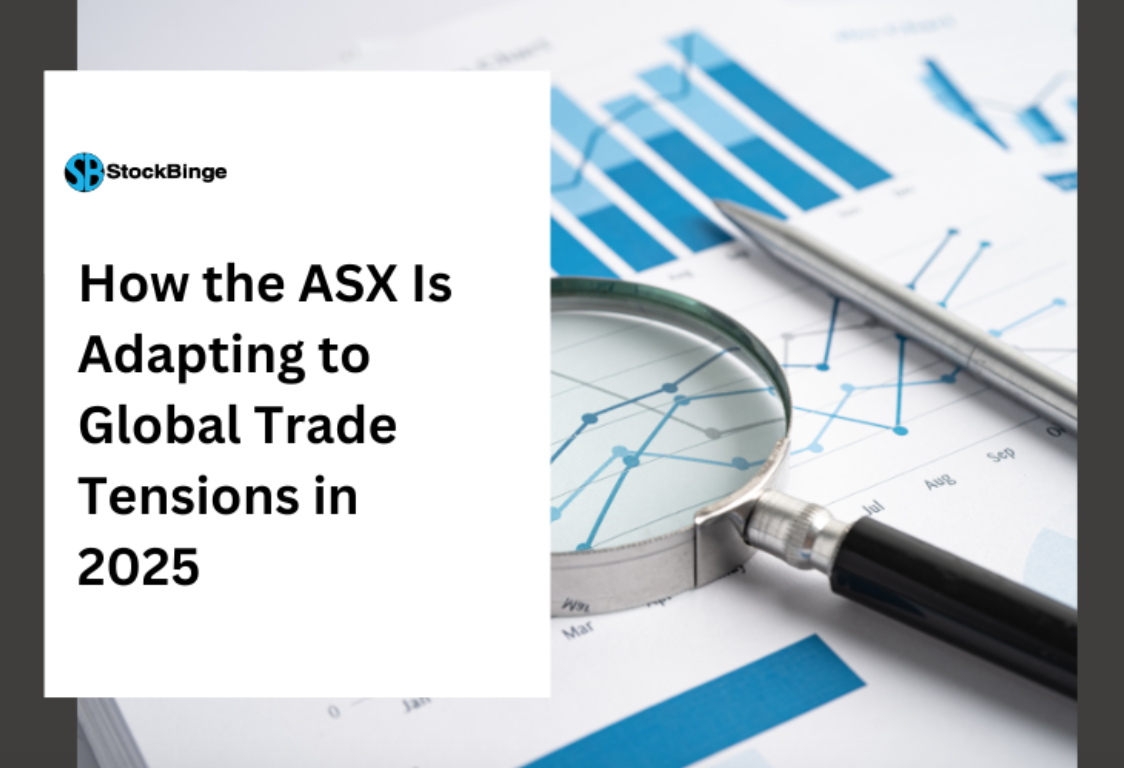Blog Details
- Home
- Blog Details

How the ASX Is Adapting to Global Trade Tensions: What Investors Need to Know
Global trade tensions have returned to the spotlight in 2025, driven by the United States’ aggressive tariff policies and geopolitical uncertainties. These developments are influencing markets worldwide, including the Australian Securities Exchange (ASX). With the ASX being closely tied to global commodity demand, currency flows, and export trends, Australian investors are watching these events closely.
In this article, we break down how trade tensions are impacting the ASX, what sectors are most affected, and how listed companies are responding to mitigate risks and capitalise on emerging opportunities.
The New Wave of US Tariffs and Global Trade Tensions
US-China and US-EU Trade Policies Driving Volatility
In 2025, the Biden administration introduced a series of renewed tariffs on Chinese-made electric vehicles, steel, and technology products, citing national security and fair trade practices. Simultaneously, tensions have escalated with the European Union over agricultural and green tech subsidies.
Ripple Effects on the Australian Market
While Australia is not directly involved in these tariff disputes, the indirect effects are significant:
-
Reduced global demand for Australian commodities due to slower Chinese growth
-
Volatile currency movements, particularly AUD/USD
-
Stock price fluctuations in export-dependent sectors like mining, agriculture, and tech
Impact on Key ASX Sectors
Mining and Resources
China’s Slowdown Affects Iron Ore Giants
Australia’s largest trading partner, China, has experienced a slowdown in industrial activity due to its economic decoupling from the US. This has affected demand for Australian iron ore, impacting heavyweights such as:
-
BHP Group (ASX: BHP)
-
Fortescue Metals Group (ASX: FMG)
-
Rio Tinto (ASX: RIO)
Share price volatility has risen as investors assess the risk of weaker export volumes.
Agriculture and Food Exporters
Tariff Spillovers Hit Soft Commodities
Companies involved in soft commodities, such as GrainCorp (ASX: GNC) and Costa Group (ASX: CGC), are facing increased pressure as trade distortions impact pricing. With global buyers shifting supply chains, Australian producers are seeking alternative markets in Southeast Asia and the Middle East.
Technology and Manufacturing
Supply Chain Reconfiguration Creates New Challenges
ASX-listed tech and industrials are dealing with higher input costs due to global supply chain re-routing. However, firms like WiseTech Global (ASX: WTC) and Bravura Solutions (ASX: BVS) are using the moment to expand in Asia-Pacific logistics and fintech.
Currency Volatility and the Australian Dollar
AUD/USD in Focus
The AUD has experienced sharp fluctuations, swinging between $0.62 and $0.68 against the USD in the past quarter. A weaker AUD boosts exporters' competitiveness but increases inflationary pressure domestically, especially on imported goods.
ASX Sectors That Benefit from a Lower Dollar
-
Tourism and education sectors benefit from a weaker currency, making Australia a cheaper destination.
-
Export-heavy sectors like resources and agriculture also see improved margins in AUD terms.
ASX-Listed Companies Taking Strategic Action
Diversification of Export Markets
Many ASX companies are actively diversifying trade partnerships beyond China and the US. Notable efforts include:
-
Treasury Wine Estates (ASX: TWE) expanding in India and Southeast Asia
-
Blackmores (ASX: BKL) growing its presence in South Korea and Japan
Supply Chain Resilience Initiatives
Companies are investing in localised production and digital supply chain technologies to reduce dependency on vulnerable trade routes. Firms like BlueScope Steel (ASX: BSL) are leveraging this approach to maintain stable production.
Investor Strategies in a Volatile Trade Environment
Focus on Defensive Stocks and Diversification
Investors are rotating into defensive sectors like healthcare, utilities, and consumer staples. Stocks such as:
-
CSL Limited (ASX: CSL)
-
Wesfarmers (ASX: WES)
-
Telstra Group (ASX: TLS)
are seeing increased interest due to their stability during external shocks.
Hedging with Gold and Safe Havens
The gold sector is experiencing renewed demand as investors hedge against currency risks and trade-linked volatility. ASX gold stocks gaining traction include:
-
Newmont Corporation (ASX: NEM)
-
Northern Star Resources (ASX: NST)
Long-Term Outlook for the ASX Amid Global Trade Realignments
Positive Signs of Regional Integration
Australia is strengthening trade ties within the Asia-Pacific region through agreements like RCEP and new bilateral deals. These offer fresh export pathways and reduce dependence on Western economies.
Tech and Innovation Sectors Gaining Traction
Amid trade uncertainty, Australian tech companies with AI, logistics, and fintech solutions are becoming more valuable. Government support and regional demand are providing tailwinds.
Conclusion: Navigating the ASX Through Global Trade Shifts
As the ASX adapts to the ripple effects of global trade tensions, savvy investors are closely monitoring macroeconomic trends, sector rotation, and company-specific strategies. While risks remain from volatile currencies and disrupted supply chains, there are also growth opportunities in technology, gold, defensive sectors, and diversified exporters.
For those investing in the ASX in 2025, understanding these dynamics is key to making informed, forward-looking decisions.
References and Sources:
-
Bloomberg - Asia Markets
-
ASX Company Announcements
ABN 54 672 177 347 | ACN 672 177 347
Copyright © 2025 StockBinge. All Right Reserved. Design by StockBinge.
